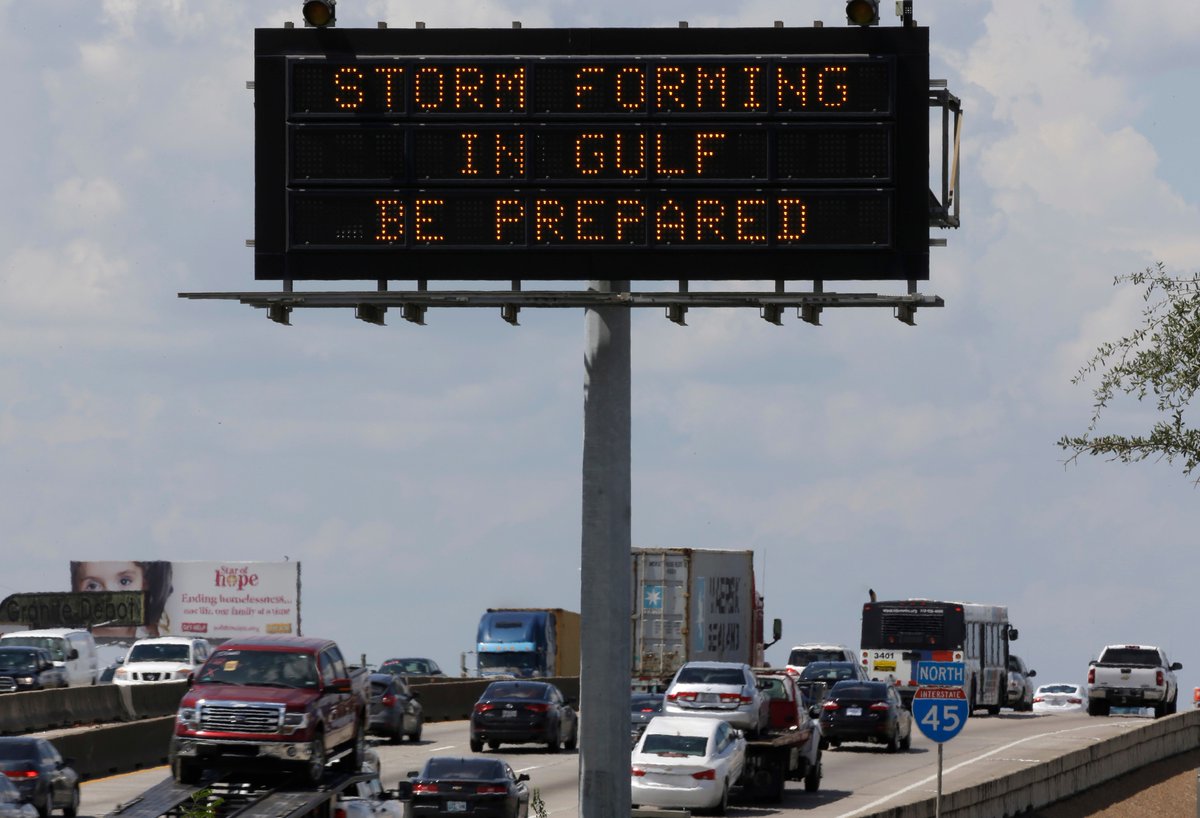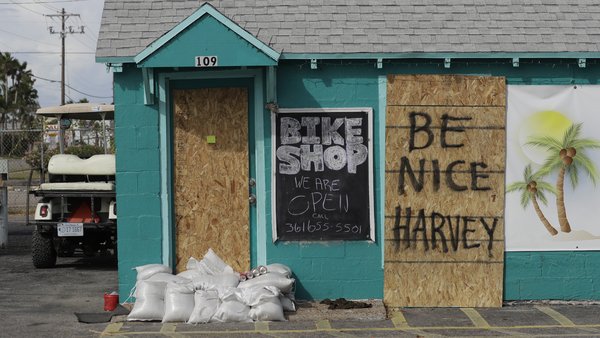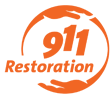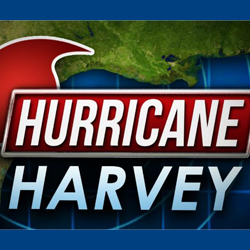Currently a category 2 hurricane, Hurricane Harvey is expected to intensify over the next 24-48 hours with the potential to become the nation’s first Category 3 hurricane to hit landfall in nearly 12 years. The hurricane, which started as a tropical depression, will likely slam the Texas Gulf Coast and parts of Louisiana with heavy rainfall, catastrophic floods, and destructive winds. Many believe that because of the strength of the hurricane, some areas and homes could be uninhabitable for extended periods of time.
In anticipation of the storm, Texas Governor Abbott declared a state of disaster for 30 Texas Counties, including Galveston and Harris. You can check to see if your county is on the list at the Office of the Texas Governor website.
With the safety of you, your family, and your friends in mind, here are some hurricane safety tips to make it through Hurricane Harvey:
Tips for Before, During, and After a Flood
Before a Flood: Prepping and Being Prepared
Severe weather disasters such as flooding can be extremely scary events, but with some preventive prepping and general preparation of your home, you and your family can minimize the potential damage. Here are 5 things you can do to prepare for a flooding disaster:
 Create a Disaster Survival Kit – You should also have a disaster survival kit created in case of an emergency like a tornado or hurricane. Include non-perishable food, bottled water, flashlights, batteries, candles, and a first aid kit. Don’t forget to grab important emergency contact information and insurance documents, as well as medications.
Create a Disaster Survival Kit – You should also have a disaster survival kit created in case of an emergency like a tornado or hurricane. Include non-perishable food, bottled water, flashlights, batteries, candles, and a first aid kit. Don’t forget to grab important emergency contact information and insurance documents, as well as medications.
Secure your Valuables – Secure both personal possessions as well as the home itself. Move furniture, valuables, and important documents to a higher level in your home, such as the second floor. For safety purposes, shut off the main power supply, unplug electronics, and move hazardous materials to higher ground. Also, secure any outdoor items or furniture that may be picked up by high winds. If you have a mobile home, make sure it is anchored.
Protect your Pets – In addition to protecting yourself and your family, make sure to take care of your pets. If your pet remains with you, bring enough food to last through the emergency and remember any pet medications as well. If you need a safe place for your pet to stay during a disaster emergency, you can find a local shelter at PetFriendlyTravel.com
Stay Informed – Information is power and during a disaster, this is certainly the case. In addition to using the Red Cross website, download the free Red Cross emergency app on your smartphone. Remember to bring your phone charger with you if you decide to evacuate. Find your local Red Cross chapter for more information on disaster relief.
During a Flood: Staying Safe
Once flooding occurs, the focus should shift to safety. Floods are extremely dangerous and life-threatening emergencies so the best tip we can give you is to always put the safety of you and your family first. During a flood emergency:
DO
- Relocate your family to higher ground. An attic or top floor of your home is much safer during a flood. If you become stranded on the road, seek higher ground on top of your car but be prepared to abandon it as well if water currents begin to move your vehicle.
- Stay updated on the storm, even if the power goes out. This may mean investing in a battery-powered radio or television. Also, download the Red Cross app.
- Let family members and friends know that you are safe by registering online at Safe and Well.
- Call Red Cross Emergency Response for assistance
- Go to an American Red Cross Reception Center or Shelter if you’re displaced or if you’re evacuating and need a safe place to stay.
DON’T
- Drive. If possible, avoid driving altogether. This is because when a flash flood strikes it happens fairly fast, resulting in roadways becoming unsafe and completely submerged in unsanitary flood water. Communicate with your employer if heavy rain or flooding causes roadways to close.
- Panic, especially if you’re a parent. If you’re experiencing a true emergency call 911 immediately.
After a Flood: Recovery and Relief
Experiencing a severe weather event like a flood is a traumatic experience but sometimes, the aftermath is just as stressful. After a storm and specifically a flood the focus shifts to recovery and restoration efforts.
Floods and Water Damage
A severe storm can cause flooding, down power lines, uproot tree roots that damage plumbing and pipes, as well as lead to countless other forms of water damage:
- Category 1 Water, which is any water that comes from a water supply line like a bathtub or sink and doesn’t pose a significant health threat to humans
- Category 2 Water, which is water that contains harmful contaminants and microorganisms like a toilet bowl that have the potential to make humans sick
- Category 3 Water, which is the most dangerous form of water because it contains extremely harmful bacteria and fungi that can cause sickness, disease and even death if ingested
Once rain or flood water penetrates porous surfaces of your home or business you’ve got anywhere from 24-48 hours to address the water damage before your property and possessions become at risk for mold infestation and other health problems.
Floods and Mold
Stagnate water is a breeding ground for mold, mildew, and other unwanted fungus so fast response to water damage is essential. Additionally, consumption of it or even exposure to it can lead to severe health risks including:
- Allergies
- Asthma
- Difficulty breathing
- Disease
- Respiratory issues
- Death
If the flood water inside your home is from an unsanitary source such as an overflowed river or sewage system, you and your family are much more at risk for a mold outbreak. That is because water is categorized based on the source and category 3 water is highly susceptible to bacteria and fungus growth.
Hurricane Safety and Evacuation
The best way to stay safe during Hurricane Harvey or any storm that your home is in the direct path of is evacuate and relocate, if possible. This is because avoiding the center of a storm will provide an extra layer of safety, which is important.
 If you can, try to stay with a family member or friend outside of the disaster area or use saved up emergency funds for a hotel or motel stay. Another option for those without local relatives is to find a shelter in your area. For example, there are already shelters being set up in Austin, with more expected to come.
If you can, try to stay with a family member or friend outside of the disaster area or use saved up emergency funds for a hotel or motel stay. Another option for those without local relatives is to find a shelter in your area. For example, there are already shelters being set up in Austin, with more expected to come.
You also want to stay informed in any way, shape, or form you can. This means finding access to some sort of communication device, weather’s it’s a television, radio, computer, or your cell phone. You’ll want to closely follow things like weather updates, emergency escape routes (if necessary), shelters, blocked roads, etc. One great resource for this is the Red Cross Emergency Response Services.
There are also numerous ways to potentially minimize the damage a hurricane does to your home or business. Some ways you can keep your property safe before and during a hurricane include boarding up windows with plywood, covering doors with sandbags, and shutting off utilities. Plywood will dispel debris from windows that break from impact. Sandbags can absorb excess water to stave off rising rain from seeping into your property. And finally, turning off the utilities prevents excess damage from occurring should a water line break or electrical wires fray from the hurricane.
Returning to your Property after Hurricane Harvey
If your home or business is damaged or destroyed by Hurricane Harvey, FEMA is your go-to resource for relief and assistance. You can submit claims to FEMA via their Federal Emergency Management Agency website.
Additionally, you’ll also want to contact your flood insurance provider, if applicable, as well as a certified restoration company such as 911 Restoration. We currently have boots on the ground in the area to help with hurricane relief efforts, so feel free to contact our 911 Restoration of Galveston, 911 Restoration of Houston, or 911 Restoration of San Antonio branches with your home recovery & restoration questions or concerns. Our 911 Restoration local branches can also help you file claims with your insurance company, deal with secondary disaster issues such as mold, and of course restore your property.
Hurricane Harvey Info & Resources
If you or someone you know is injured as a result of Hurricane Harvey, immediately call 911 to reach for emergency services. Here are additional resources and links to Hurricane Harvey information that could save your life:
And here are some Twitter accounts to follow for real-time updates on Hurricane Harvey:
And finally, make sure to download the Red Cross mobile app on your smartphone. It’s a great resource to locate first responders and shelters in your local area.
Our thoughts and prayers are with everyone in the Texas Gulf Coast and Louisiana area who will be affected by this terrible disaster. During Hurricane Harvey, try to stay positive, stay informed, and most importantly stay safe.


